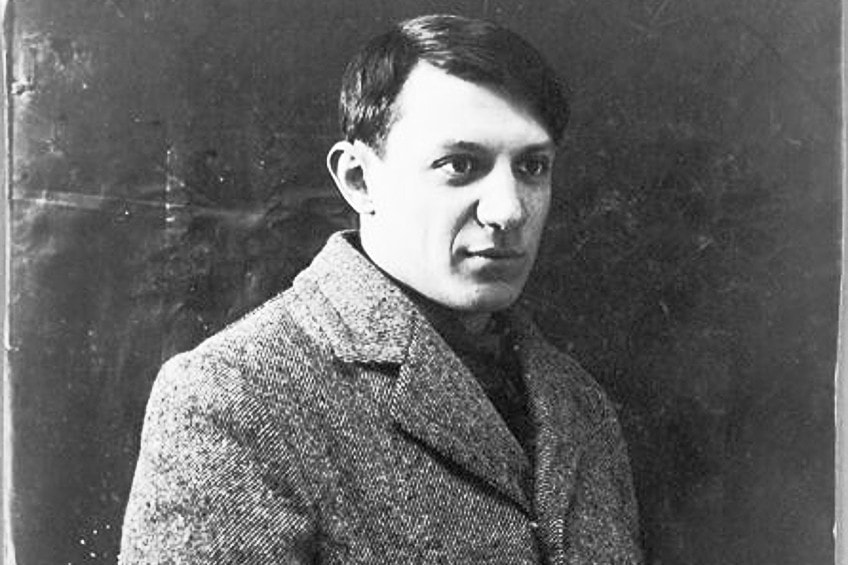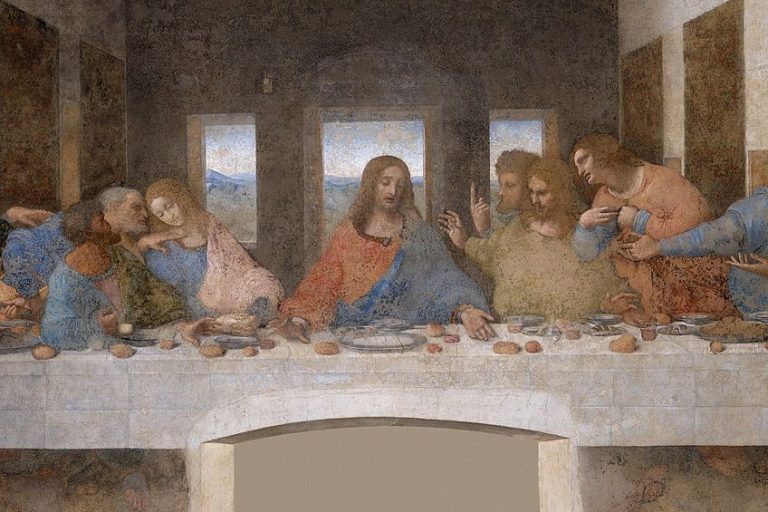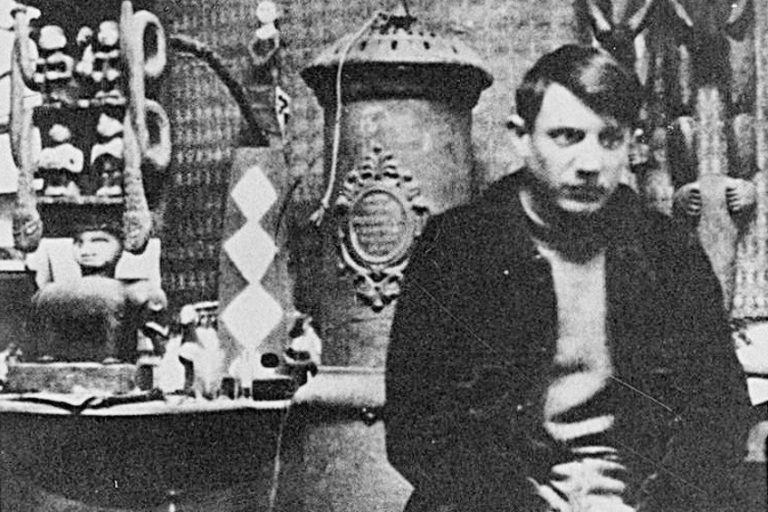“The Weeping Woman” by Pablo Picasso – An Analysis of the Work
Pablo Picasso is an artist known by many. He explored various themes in his art, which include his crying woman painting, one of his famous abstract art examples, and one we will discuss in the article below.
Artist Abstract: Who Was Pablo Picasso?
Pablo Ruiz Picasso was born on October 25, 1881, and died on April 8, 1973. He was born in the town of Málaga, which is in Spain. He was a pioneering artist and started art at a young age, creating drawings and oil paintings.
He evolved in mediums throughout his career, eventually landing on collages, printmaking, and sculpture.

His art career has been distinguished by various periods, namely, The Blue Period, The Rose Period, African/Primitivism, Neoclassicism, and Surrealism, as well as Cubism, of which he was one of the founders. Some of his famous artworks include his Portrait of Gertrude Stein (1906), Les Demoiselles d’Avignon (1907), Still Life with Chair Caning (1912), and Guernica (1937).
The Weeping Woman (1937) by Pablo Picasso in Context
| Artist | Pablo Picasso |
| Date Painted | 1937 |
| Medium | Oil on canvas |
| Genre | Portrait painting |
| Period / Movement | Cubism / Surrealism |
| Dimensions (cm) | 61 x 50 |
| Series / Versions | Part of a series of four versions |
| Where Is It Housed? | Tate Modern, London, England |
| What It Is Worth | Exact price is uncertain but an estimate of it in 1969 was between £60,000 and £80,000. |
Pablo Picasso’s The Weeping Woman is part of four crying woman oil paintings the artist started in 1937, along with numerous drawings of the crying woman during the same year. This article will start with a brief contextual analysis discussing the motivations around why Picasso painted it, which will be followed by a formal analysis outlining his artistic techniques according to the art elements.
It is important to note that while there are four versions of the crying woman painting, this article will focus on “The Weeping Woman” (1937) which is housed in the Tate Modern in London, notably when mentioning it throughout the text, as well as discussing it in the formal analysis.
Contextual Analysis: A Brief Socio-Historical Overview
Pablo Picasso’s crying woman series was based on his poignant mural painting Guernica (1937), which he created protesting the events that occurred on April 26 in 1937, when the German Nazis under Adolf Hitler, on behalf of the Spanish Nationalist Francisco Franco, aerial bombed the town called Guernica. The event left terrible destruction and many civilians were killed.
Picasso depicted various figures in pain and suffering, a visual portrayal of the shock from the bombing, in his often described “anti-war” mural.

Furthermore, Picasso produced and explored the image of the weeping woman, which depicts a crying woman in immense pain and turmoil, which is the same turmoil seen in a woman crying and holding her dead baby in Guernica. He drew and painted numerous renditions of the crying woman, and as mentioned above.
He produced four paintings, of which one is housed in the Tate Modern in London, England. The other three are housed in different museums.
Weeping Woman (1937) is housed at the National Gallery of Victoria Melbourne in Australia; Weeping Woman with Handkerchief (1937) is housed at the Los Angeles County Museum of Art, and the other Weeping Woman (1937) is at the Museo Málaga in Spain.
The Two Faces of The Weeping Woman
The Weeping Woman by Pablo Picasso was modeled by the photographer and artist Dora Maar. She was also Picasso’s romantic partner, sometimes described as his “mistress” and “muse”; they were together for around nine years. Picasso is famously quoted as explaining why he painted Dora Maar in “tortured forms”, which was not through “sadism” or “pleasure”, but because to him she was “always a weeping woman” he further stated that it is important because “women are suffering machines”.
However, from numerous accounts, Maar’s sadder demeanor may have been an influencing factor on the above subject matter by Picasso, but Maar has also been quoted as stating that all of Picasso’s renditions of her were “lies”.
The Weeping Woman Symbolism
Pablo Picasso explored the theme of the crying woman, and especially the physical and emotional devastation caused by war and the bombing of Guernica, while he painted the similarly titled Guernica. Picasso’s depiction of the crying woman undoubtedly made her a symbol of the agony that resulted from wartime events.
However, there have been other interpretations of the crying woman painting, suggested by numerous scholars and writers.
One of the more common meanings is tied to the idea of the Mater Dolorosa and the Virgin Mary. The term Mater Dolorosa means “sorrowful mother” and relates to how the Virgin Mary mourned for Jesus Christ when he died. This is a similar concept evident in The Weeping Woman, but also in the image from Picasso’s Guernica painting, of the mother in sorrow over her dead child. It is also a commonly utilized theme in art, notably in Spanish art.
The Mater Dolorosa is often produced as statues or sculptures and portrayed with glass tears running down her face. This motif is echoed in Pablo Picasso’s crying woman painting who also has a visible tear running down the right (our left) side of her face. Another possible meaning has been proposed by Rolan Penrose, who was an artist and exponent of Surrealism in England, as well as Pablo Picasso’s friend and biographer. He interpreted The Weeping Woman as being a Surrealist artwork, noting several motifs related to dreams, for example, the “eyelid-boat”.
However, although some of Picasso’s artworks depict typical Surrealist tendencies and symbolisms, and he was influenced by the style, he did not exactly identify as a Surrealist and reportedly did not join the Surrealism group.
Interestingly, he did exhibit at the Surrealism exhibition, which was held in 1925, but his artistic career spanned several different styles. The Weeping Woman painting, as well as the mural Guernica, were possibly influenced by Surrealistic styles, most notably due to the freedom of expression as well as the exploration of psychological (subconscious) aspects of human nature and life, which the Surrealist thoroughly explored in their art and their principles.
The Weeping Woman Stolen
Roland Penrose bought The Weeping Woman painting from Pablo Picasso in 1937; he is famously quoted as explaining that he bought it “when the paint was still wet”. The painting was kept at his house, which was on Hornton Street in London. It was stolen from his home in April 1969, among numerous other artworks.
However, it was found only a couple of months after its theft, reportedly in the Borough of Ealing, which is in West London, at a house that was planned for demolition.
Penrose gave the painting to his son, Antony, reportedly in 1963. After the theft, Antony Penrose decided to loan the painting to the Tate Gallery to keep it safe. Furthermore, in 1987 the painting was donated to the Tate “in lieu of tax” (alongside additional payment). This was after Roland Penrose died and his son was left with an inheritance tax from the estate.
It is also interesting to note that “The Weeping Woman” (1937) housed at the National Gallery of Victoria in Australia was also stolen in August 1986.
It was found within the same month, just over two weeks later, at Spencer Street Station in a locker and wrapped in paper. It was reportedly stolen by the “Australian Cultural Terrorists”, however, many sources indicate that it was an unsolved case.
Formal Analysis: A Brief Compositional Overview
Below we will discuss the famous abstract art The Weeping Woman by Pablo Picasso in more depth, starting with a visual analysis and then outlining the artist’s techniques in terms of color, texture, line, shape, form, and space.
Subject Matter: Visual Description
The Weeping Woman by Pablo Picasso is depicted as an abstract, fragmented, and multi-colored portrait of a crying woman. With her head ever so slightly positions upwards, she is holding up a handkerchief in both her hands, tears flood her eyes, and there appears to be a stream of her tears running down her upper right (our left) cheek culminating in a droplet just below where her ear is.
On her right side (our left) are long streaks of hair reaching just below her right shoulder, and she appears to have a small fringe over her forehead.
Reportedly her hairstyle is reminiscent of how Dora Maar’s hair was. She is wearing a red and blue hat with a blue and yellow flower on it. Her left shoulder (our right) is open, depicting the background behind her as well as the stylized garment covering her shoulder.

The composition is highly fragmented and angular, notably in the center of the crying woman’s face where her hands, mouth, nose, handkerchief, and eyes meet. The top parts of the handkerchief are pyramidal shapes with tips directly below her eyes, the latter is depicted as two full frontal and ovular shapes. The crying woman’s eyes are surrounded by full and distinct eyelashes, the left eye (our right) has the same lush eyelashes circumventing her entire eye, while her right eye (our left) only depicts the upper part of eyelashes.
Her nose is depicted in a profile view, which is an art term that means the subject is depicted from the side.
Her mouth is almost in a frontal view from her right side (our left), and the last third of her mouth on her left (our right) is not visible; both rows of her teeth are also exposed. Her mouth is significantly expressive and emphasizes her anguished emotions. The handkerchief is depicted in a different color than the rest of the composition, which also makes it easier to distinguish. It is an off-white or gray color with hints of blue.
Although it covers a large area of the crying woman’s face, it simultaneously, and seemingly, appears translucent revealing her facial features behind it. It also appears as if the woman is biting down on a piece of the handkerchief. It is almost as if the handkerchief is there and not there at the same time, which touches on the fragmented aspects of the composition and the parts and angles that overlap with one another causing multiple viewpoints in a singular space.
Color
Picasso utilized multiple colors in The Weeping Woman painting, from blues, reds, yellows, greens, purples, browns, and blacks. The off-white/gray color of the handkerchief creates a contrast from the multiple colors of the crying woman as well as the background. Furthermore, looking at the color scheme; there are notably primary colors (reds and blues) with an interspersal of secondary colors like greens and lavender purple.
The background is largely yellow with a red floor and a brownish skirting board dividing the wall and floor.
Texture
The texture in The Weeping Woman by Pablo Picasso is implied and tactile, for example, implied texture is created through the lines of paint delineating the woman’s hair, the dashes of paint implying the seams or texture of her clothing, and the short lines of paint that imply the short hairs making the eyelashes. The tactile texture of the paint is also visible on the canvas, for example, the thicker and more haphazard brushstrokes applied on the background.
The brushstrokes are visible on her face, hands, and exposed wrist area, notably on the latter the brushstrokes appear horizontally applied and a blend between green and yellow.
Line
The Weeping Woman is composed of a variety of lines, from more organic to geometric, all creating the Cubist fragmentation so characteristic of Pablo Picasso’s art. It is a blend of curved and straight lines in all types like short, long, thick, and thin.
There are also distinct and thick outlines, for example, the curved lines compose the woman’s hair, eyes, or smaller features like the round of her nails or curves of her lips.
There are geometric, or angular lines, denoting her left eyebrow (our right), the strong straight line on the left (our right) of her face, as well as shorter straight outlines of the handkerchief. Shorter lines are composing the seams on her clothing, and this repetition creates a patterned effect. The background is composed of longer vertical and horizontal lines, which become sharper diagonal lines to the bottom left of the composition, where the skirting boards appear to bend.
Shape and Form
The Weeping Woman by Pablo Picasso is filled with organic and geometric shapes and forms, all composing the subject matter. However, like the lines, the shapes and forms are fragmented, sometimes described as “broken”, and “distorted”. Examples include the more organic oval shapes of the woman’s eyes, the triangular shapes created by the handkerchief’s folds and edges, as well as the small pyramidal form to the left (our right) of the woman’s face.
There are also a variety of triangular shapes compositing the woman’s clothing.
Space
The compositional space of The Weeping Woman by Pablo Picasso is fragmented and a blend of two and three dimensions. The background appears almost as close as the figure of the crying woman, who is similarly closely positioned in the foreground, almost coming face to face with us, the viewers. There is a sense of depth in the way Picasso applied the diagonal lines near the bottom left background, where the skirting boards appear to bend and slightly open the space of the room.
Although the wall appears to bend, it could possibly be another angular distortion of the wall depicting several viewpoints in one space.
The Many Faces of The Weeping Woman
Pablo Picasso was a significant artist of the 20th century and became well-known around the world; he introduced new art styles and techniques that influenced many artists. From his collages to the creation of Cubism, his artworks exemplified new angles, viewpoints, and the ultimate pursual of art and its creation.
In this article, we discussed only one of thousands of paintings by Picasso; his passion and protest come through in “The Weeping Woman” painting, which seemingly stands on the shoulders of his larger mural titled “Guernica”. It also personifies the pain of devastation, whether from war, loss, and grief. Pablo Picasso gave sorrow a face in “The Weeping Woman” painting; it is a portrait of emotional angst, and whether from war or death, we can find many faces here showing us the pictorial, and psychological, distortions so typical of life.
Frequently Asked Questions
What Is the Crying Woman Painting?
The famous crying woman painting refers to Pablo Picasso’s The Weeping Woman (1937) oil painting, which was inspired by his mural Guernica (1937) and the sorrowful figures, more specifically a woman holding her dead baby, shock-stricken from the air bombing of the town called Guernica in April 1937.
Who Is the Model in The Weeping Woman Painting?
Pablo Picasso’s romantic partner Dora Maar was the model for his famous The Weeping Woman (1937) paintings, of which the artist produced four paintings and several drawings of the theme around a woman crying.
Where Is The Weeping Woman by Pablo Picasso?
There are four paintings of The Weeping Woman (1937) by Pablo Picasso, and one is housed in the Tate Modern in London, England. The other three are at the National Gallery of Victoria in Melbourne, Australia; the Museo Málaga in Spain, and the Los Angeles County Museum of Art in the United States of America.
Alicia du Plessis is a multidisciplinary writer. She completed her Bachelor of Arts degree, majoring in Art History and Classical Civilization, as well as two Honors, namely, in Art History and Education and Development, at the University of KwaZulu-Natal, South Africa. For her main Honors project in Art History, she explored perceptions of the San Bushmen’s identity and the concept of the “Other”. She has also looked at the use of photography in art and how it has been used to portray people’s lives.
Alicia’s other areas of interest in Art History include the process of writing about Art History and how to analyze paintings. Some of her favorite art movements include Impressionism and German Expressionism. She is yet to complete her Masters in Art History (she would like to do this abroad in Europe) having given it some time to first develop more professional experience with the interest to one day lecture it too.
Alicia has been working for artincontext.com since 2021 as an author and art history expert. She has specialized in painting analysis and is covering most of our painting analysis.
Learn more about Alicia du Plessis and the Art in Context Team.
Cite this Article
Alicia, du Plessis, ““The Weeping Woman” by Pablo Picasso – An Analysis of the Work.” Art in Context. December 22, 2022. URL: https://artincontext.org/the-weeping-woman-by-pablo-picasso/
du Plessis, A. (2022, 22 December). “The Weeping Woman” by Pablo Picasso – An Analysis of the Work. Art in Context. https://artincontext.org/the-weeping-woman-by-pablo-picasso/
du Plessis, Alicia. ““The Weeping Woman” by Pablo Picasso – An Analysis of the Work.” Art in Context, December 22, 2022. https://artincontext.org/the-weeping-woman-by-pablo-picasso/.











